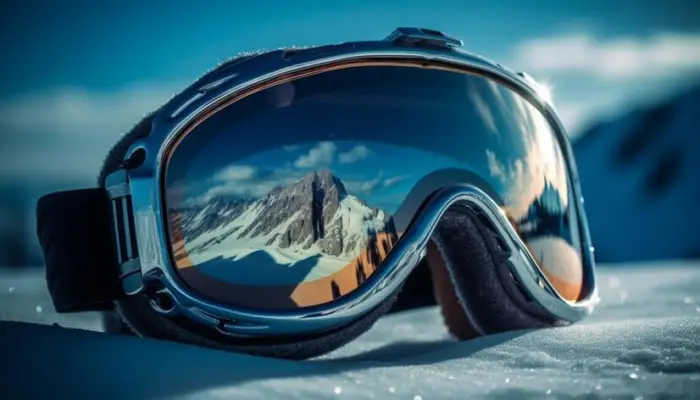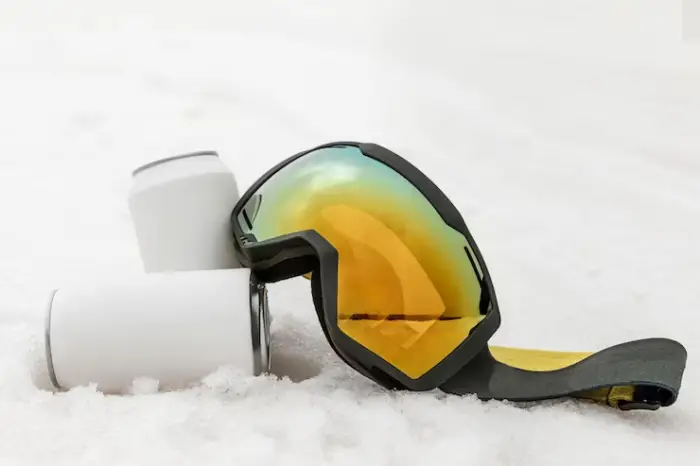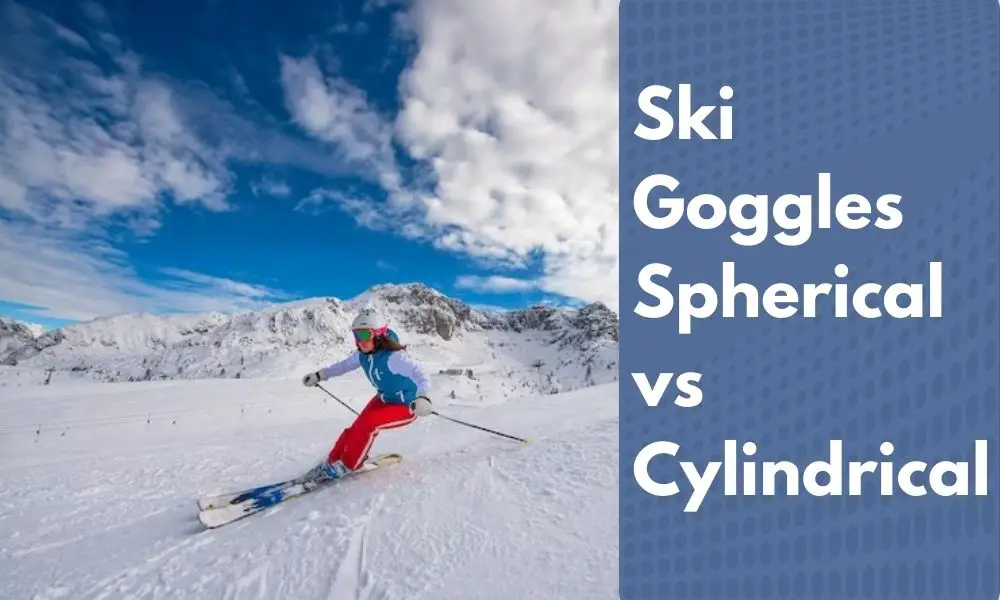Have you ever wondered what is the main point of difference between these two lenses? What is it that differentiates them from each other?
There must be something, right? That makes people choose between the both.
Yes, there is something indeed. In this article, I’m going to dissect the two goggles for you to clear why they’re different, and how they’re different. Read on to know more!
Spherical Goggles

Spherical ski goggles are designed specifically for winter sports like skiing and snowboarding. Spherical goggles feature a curved lens that mimics the shape of the human eye, giving them a more spherical or rounded appearance. The curvature of the lens is typically in both the horizontal and vertical directions, providing a more natural and distortion-free field of view.
The characteristics of spherical ski goggles include:
Enhanced peripheral vision
The curved shape of the lens allows for better visibility on the sides, giving skiers and snowboarders a broader view of the slopes and potential dangers.
Reduced distortion
Spherical lenses help to reduce the fish-eye effect and visual distortion, providing a clearer and more accurate view of the surroundings.
Improved optics
The curvature of the lens allows for better light transmission and minimizes glare, especially in bright and sunny conditions.
Better fit
Spherical goggles tend to conform better to the shape of the face, reducing gaps and ensuring a snug fit that helps to keep the elements out and prevent fogging.
Cylindrical Goggles

Cylindrical goggles, also known as cylindrical lens goggles, are another type of eyewear commonly used for skiing and snowboarding. Similar to spherical goggles, their primary purpose is to provide protection and visibility in snow sports environments. However, cylindrical goggles have a different lens design that sets them apart from spherical goggles.
The term “cylindrical” refers to the shape of the lens. Unlike spherical lenses that curve both horizontally and vertically, cylindrical lenses curve horizontally across the lens but remain flat vertically. This means that the lens has a consistent curve from left to right but maintains a vertical flatness.
Here are some features of cylindrical goggles:
Field of View
Cylindrical goggles offer a wide horizontal field of view, which can be beneficial for detecting obstacles and movements from side to side.
Visual Distortion
Cylindrical lenses may have some visual distortion, particularly in the peripheral areas, due to the vertical flatness of the lens. This distortion can be more noticeable compared to spherical lenses, especially when looking up or down.
Anti-Fog Technology
Like spherical goggles, high-quality cylindrical goggles come with anti-fog coatings and ventilation systems to prevent fogging and maintain clear vision during snow sports activities.
UV Protection
Cylindrical lenses are also designed to provide UV protection, shielding the eyes from harmful rays while out in the sun and snow.
Price
Cylindrical goggles tend to be more budget-friendly compared to spherical goggles. They can offer a good balance of performance and affordability for those looking for functional snow goggles on a budget.
Difference Between Spherical Goggles And Cylindrical Goggles

Even though both of them have excellent features that come in handy while in the snow, they both are different from each other. Here are the main differences between spherical goggles and cylindrical goggles used for skiing.
Lens Shape
Spherical goggles have lenses that curve both horizontally and vertically. Cylindrical goggles have lenses that curve horizontally but remain flat vertically.
Field of View
Because they are curvier, the spherical goggles offer a wide field of view both horizontally and vertically. They offer a wide horizontal field of view but a more limited vertical field of view compared to spherical goggles.
Visual Distortion
Spherical lenses have minimal visual distortion, resulting in a more natural and clear view. Cylindrical lenses may have some visual distortion, particularly in the peripheral areas, due to the vertical flatness of the lens.
Anti-Fog Technology
Spherical lenses come with advanced anti-fog coatings and ventilation systems to prevent fogging. The Cylindrical lenses also come with anti-fog coatings and ventilation systems.
UV Protection
Both Spherical lenses and Cylindrical lenses are designed to provide UV protection, safeguarding the eyes from harmful rays.
Comfort and Fit
When it comes to comfort, Spherical and Cylindrical excel together. They are designed with ergonomic features and adjustable straps for a comfortable and secure fit.
Who Should Buy Spherical Goggles And Who Should Buy Cylindrical Ones?
Now that you know what are the main points of differences between the two, it will be easier for you to point out which one is the best for skiing and which one is not.
Spherical goggles are an excellent choice for those who prioritize an exceptional field of view and clear peripheral vision on the slopes. The lenses allow for a more natural and distortion-free view. These goggles are ideal for avid skiers and snowboarders who spend a significant amount of time on the slopes and seek top-notch performance and eye protection.
On the other hand, cylindrical goggles cater well to those who are budget-conscious and looking for functional snow goggles without breaking the bank. For casual skiers who only engage in snow sports occasionally, and who are not heavily impacted by mild visual distortion, cylindrical goggles can be a practical and cost-effective option.
Conclusion
Ultimately, the choice between spherical and cylindrical goggles comes down to individual preferences and needs. Skiers and snowboarders should consider their priorities, budget, and how often they hit the slopes.
Trying on different goggles, if possible, is a good idea to assess how well they fit, how comfortable they are, and how they meet specific requirements. Regardless of the type chosen, ensuring the goggles provide adequate UV protection, have anti-fog features, and fit well with the helmet and other gear is crucial for a safe and enjoyable snow sports experience.
So, now that we’ve reached the end I hope your doubts about the spherical and cylindrical goggles have been cleared. Good luck skiing!

